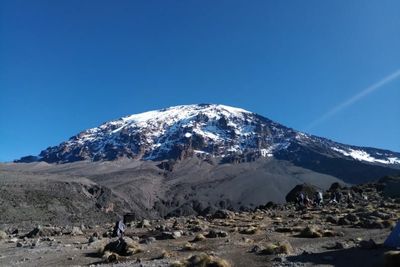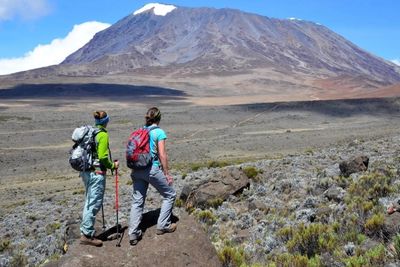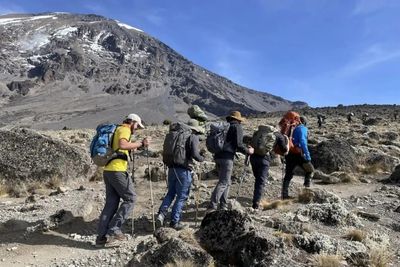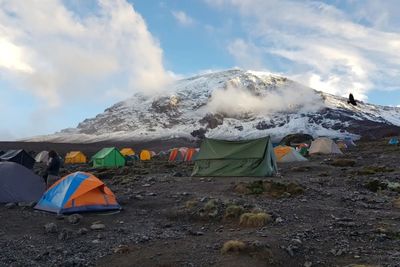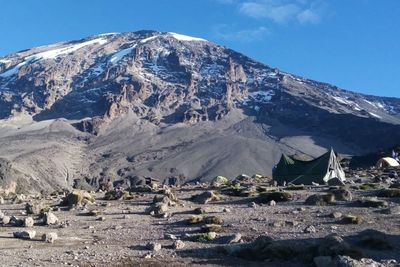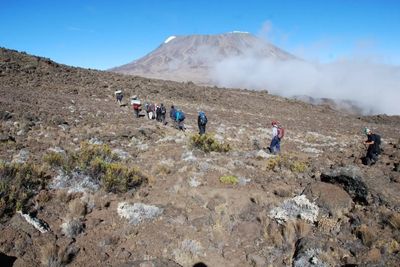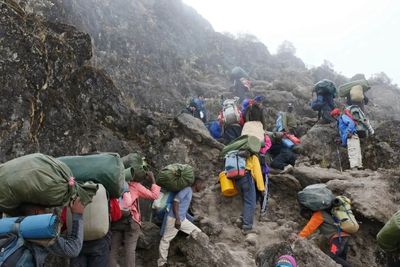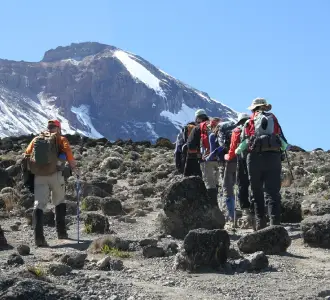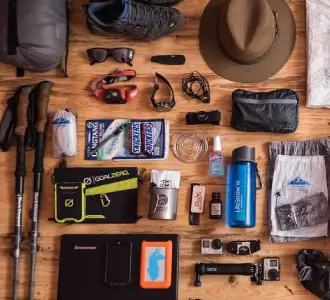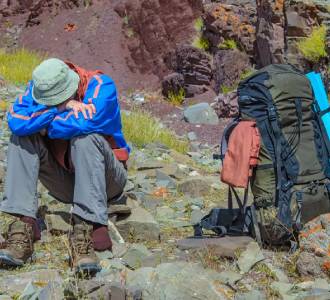Altitude sickness, also called Acute Mountain Sickness (AMS), is a condition that can affect people who travel to high elevations, like when Climbing Mount Kilimanjaro.
This illness usually occurs above 2,400 meters (8,000 feet) when the body struggles to adapt to lower oxygen levels and reduced air pressure. As the air gets thinner, the oxygen available in each breath decreases, making it harder for the body to function normally.
The body tries to cope by increasing your breathing and heart rate and producing more red blood cells, which help carry oxygen. However, these adjustments don’t always work quickly enough, and you might experience symptoms like headaches, nausea, or fatigue.
In severe cases, altitude sickness can lead to dangerous complications such as High-Altitude Pulmonary Edema (HAPE) or High-Altitude Cerebral Edema (HACE), both of which require immediate medical attention.
Now, let’s discuss different forms of Kilimanjaro AMS and their symptoms, and plan of action to deal with Kilimanjaro Altitude Sickness Symptoms.
Mild AMS:
Headache, nausea, fatigue, and a loss of appetite are often the symptoms of Mild AMS. It often feels like a bad hangover.
So, if you experience mild AMS, rest, hydrate, and avoid climbing higher until you feel better. Let your Kilimanjaro Climbing Guide know about your symptoms, and don’t push through the discomfort.
Moderate AMS:
Persistent headaches that don’t improve, dizziness, shortness of breath, and vomiting are some of the signs of Moderate AMS. If symptoms worsen, it’s a sign that your body is not adjusting well to higher Kilimanjaro Altitudes.
Descending to a lower altitude immediately is the only way out, even if it means cutting your climb short. Medication like ibuprofen may help relieve pain but should not be used to continue climbing.
Severe AMS:
Intense headache, confusion, difficulty walking straight (ataxia), and extreme shortness of breath are some of the conditions that happen when AMS is extreme.
Severe AMS is life-threatening. Immediate descent is necessary, and medical treatment may be required. If symptoms escalate, evacuation from the mountain, either by stretcher or helicopter, becomes the only way to save a life.
High Altitude Pulmonary Edema (HAPE)
HAPE happens when there is fluid buildup around the lungs caused by high pressure in the lung arteries. It can develop even without severe Kilimanjaro AMS. Some symptoms of HAPE include coughing up blood or mucus, blue lips, extreme fatigue, and difficulty breathing.
If HAPE is suspected, administer oxygen and descend immediately. Evacuation to a medical facility is critical.
High Altitude Cerebral Edema (HACE)
HACE is the most dangerous condition that can happen when Climbing Kilimanjaro and requires immediate medical evaluation. The fluid accumulates around the brain, causing the climber to become confused or irrational.
Some symptoms of HACE include disorientation, hallucinations, severe headache, and inability to walk. In case this happens, the person must be taken to a lower altitude and given oxygen.
Understanding Altitude Sickness on Kilimanjaro and taking action when symptoms appear can save lives. Always listen to your body, communicate with your guide, and never ignore signs of distress. It’s better to be cautious and descend early than to face dangerous consequences.









